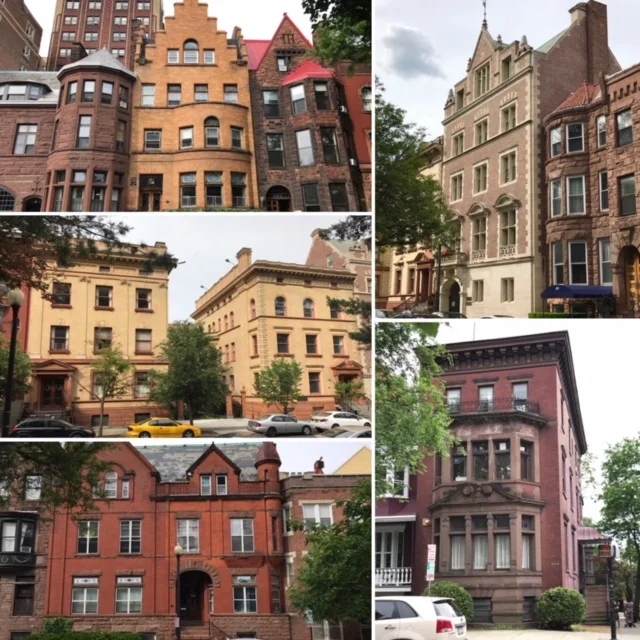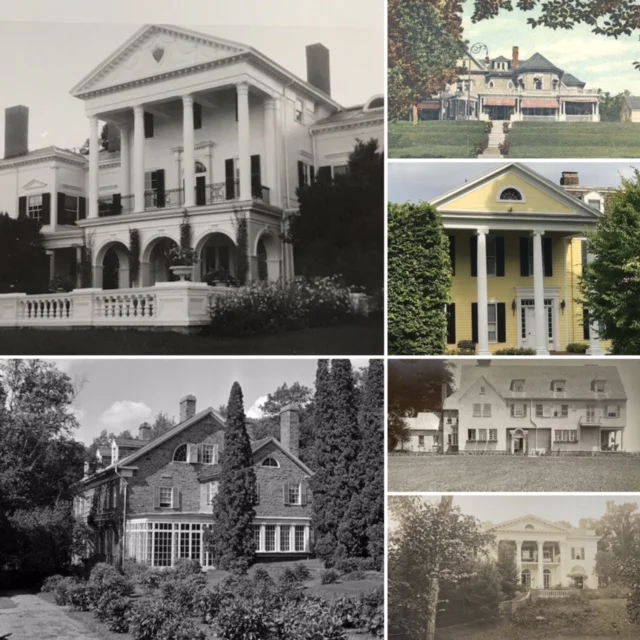All in Architecture History
While the majority of the First Class Staterooms and Suites on the Titanic were populated by Americans traveling to their homes stateside, there was also a sizable contingent of passengers who lived in other countries. Not surprisingly, being a British vessel, the next largest group in terms of numbers was the English, followed by Canadians, then the French and a half-dozen Swiss. This post will look at some of their homes, as well as a few owned by American expatriates onboard.
While my last two posts looked at the homes of the very rich and famous and East Coast urban sophisticates, in this one I will take a look at some of the other homes representing passengers from the East coast to the West. As I wrote in my first post in this series, the first class passengers on the Titanic were a mixed lot, representing a broad swath of the upper-middle and upper classes at the time. This was reflected in the style and scale of their respective homes, which embraced many of the styles of the time, from older traditional Queen Anne architecture to newer Arts and Crafts or Colonial Revival styles.
By 1912, “the times they were a changin” for the East Coast’s urban elite. Improvements in communications and transportation coupled with increased growth and congestion of major urban centers had precipitated a significant shift in their domestic living patterns….
Like any group of unrelated travelers, the First Class passengers onboard the Titanic’s maiden voyage were a varied lot; multi-millionaires, businessmen traveling on their company’s dime, splurging honeymooners and upper-middle-class families. For some, the experience was akin to traveling on a floating palace. For others, it paled next to their usual surroundings. One of the best indicators of how they might have viewed their surroundings at seas is to look at their various homes back on land.
It’s an all too familiar story. A gracious older home is purchased in a wealthy enclave or resort frequented by the rich. While seemingly perfectly adequate, it is torn down, replaced by a bigger, brasher mega-mansion seemingly out of context with the landscape, natural beauty, and character of the neighborhood…
In my last installment on the Fahnestocks, a family whose contributions to the architectural legacy of the Gilded Age are often overlooked, I focused on their townhouses. In this post, I will visit some of their country places....
While the name Fahnestock might not immediately roll off the tongue today when ticking off America’s great gilded age families, during the era they were undeniably important. The wealthy family took leading roles in the business, philanthropic and social circles of Washington DC, New York, and fashionable east coast resorts of the day. Over the next two posts, I will take a look at their homes, focusing on their residences in town in this first installment....
Watching The Greatest Showman recently, I was amused to see Woodlea (the former home of Margaret Vanderbilt Shepard, now the Sleepy Hollow Country Club) used as the home lived in by the snooty parents of PT Barnum’s wife, while interiors of the Duke Mansion on Fifth Avenue stood in for rooms in Barnum’s own mansion. While both were undeniably fabulous settings, neither was correct period-wise.It started me thinking about Iranistan, the exotically fantastic mansion that Barnum had built in real life. While searching for images of it online, I discovered PT Barnum had built no less than four splendid mansions in Bridgeport Connecticut over the course of his life.
After studying its Gilded Age history (click here for my previous post), I decided to explore Harrison Avenue and Halidon Hill on a visit to Newport last summer, curious to see what if anything remained of its Gilded Age past. Much to my pleasant surprise, plenty does. While at a passing glance it might appear that most of the cottages are long gone and the former estates broke up, it pays to look beyond the later development and explore side streets. One will be rewarded by some of the Newport’s hidden gems, some still well-maintained and occupied as single-family homes. Even some vestiges of some long gone grander estates remain.
I never thought much about the Harrison Avenue area around Halidon Hill as being a hotspot during Newport’s Gilded Age, aside from a few stellar holdovers like Bonniecrest and Harbor Court. Over time the began area popping up more and more often during research in association with various gilded age luminaries including Whitneys and Vanderbilts who summered there. Delving a little deeper I found while it may not have achieved the same degree of popularity as Bellevue Avenue or Ochre Point, this enclave overlooking the harbor had its own cachet, populated by a mixture of Old New York Society names with enough “Nobs” and “Swells” thrown in to keep it chic.
When imagining the scenes set in Newport from Edith Wharton’s The Age of Innocence, it is all too easy to picture the characters swanning in and out of Marble House, Rosecliff, The Elms, or other mansions of their ilk. Yet the Newport from the 1870s and 1880s that she wrote of in her book looked quite different in reality. Fortunately, there is a neighborhood in Newport that still retains some of that "Age of Innocence" character.....
The Newport Cottages of Vanderbilt siblings Cornelius, William K, Frederick and Florence Twombly play a large role in shaping people’s perception of life there in the Gilded Age (and rightly so). To understand just how wide and pervasive the influence of the family was at the resort as the next generation became adults (when it wouldn’t have possible to spit in Newport and not hit a Vanderbilt) it is helpful to look beyond the “Big Four “ at some of the other homes associated with the family. This post will look specifically at those of the five children of Cornelius and Alice Vanderbilt
From simple tenant farmhouses to romantic storybook cottages to architect-designed fantasies, gatehouses are a defining element of the Hudson River Historic District. Marking the entrances to a number of grand estates that form the core of the district, they give the passerby a tantalizing clue as to what lies out of sight down the long tree-lined drives they guard.
spending a night at the former summer home of William Seward and Eliza Vanderbilt Webb on the shores of Lake Champlain just might provide an individual the closest opportunity to experience what it was like to live like a Vanderbilt (or more accurately, one of their guests) for a day




















